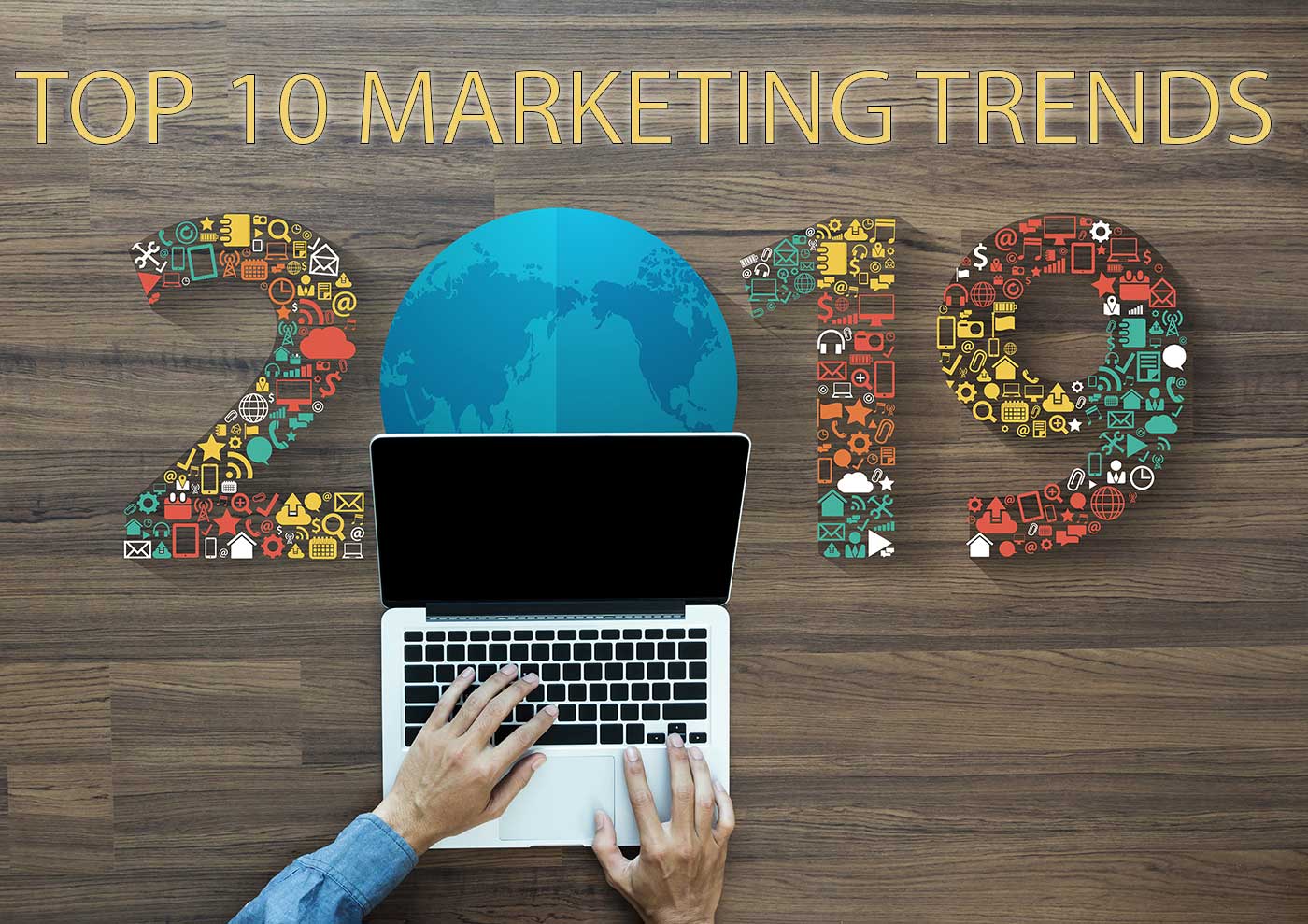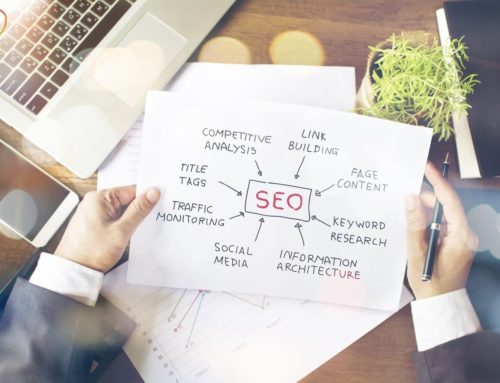With the advancement in technology, more marketing solutions are emerging to win customers who are also becoming more sophisticated by the day. For any business to remain afloat, adopting digital marketing is inevitable, therefore leading digital market agencies, keep their eyes peeled for the latest digital marketing trends. If this is what you are looking for, we’ve got you covered.
Here are the top 10 marketing trends in 2019.
-
Use of Artificial Intelligence (AI) in Marketing
Use of Artificial Intelligence in marketing involves the use of computerized systems and algorithms to identify trends by collecting and analysing data, doing competitor research and implementing the data in marketing (predictive analytics).
AI implementations include creating, generating and curating marketing content, digital advertising Ads platforms, web design, product recommendations, optimizing campaigns, automating marketing processes, improving customer service and revolutionizing internet search through optimization.
AI is evolving and improving, sometimes even performing better than humans. The major drawback is that it will replace most of the human labour, leading to a loss of jobs. On the other hand, those businesses that adopt AI will save costs and accelerate growth, beating their competition with more personalized engagement and future predictions.
-
Use of Online Videos (Live) for Marketing
Videos with entertaining, informative, engaging and story-driven content are doing better than texts and images in digital marketing. Videos use has been boosted by social platforms such as Instagram, Facebook, twitter, twitch, and YouTube. Live videos and stories are the best since they disappear after a set period of time hence making good use of FOMO (fear of missing out).
The most popular type of videos for marketing include product reviews, unboxing videos, how-to-videos, influencers interviews, behind the scenes videos (brand stories), customer testimonials and finally company culture videos.
Videos are easy-to-digest formats that bring out the reality, personality and a real-life picture. They are more popular and are also favoured by SEO as they are seen as high-quality content.
-
Engagement-Based Email Marketing
Email marketing has been around for a while, but in recent times it has become smarter. Marketers are now focusing on sending emails to active subscribers who engage, consequently leading conversions. Those without engagements are deemed dormant and don’t receive any more emails.
To identify criteria for classifying potential customers for mailing lists, marketers are integrating applications that help them sort mailing lists. This data is used by businesses in segmentation which enables marketers to target their leads more effectively by using behavioural-based emails.
Also, personalization of engagement-based emails is being used where handcrafted emails are sent to potential customers. Plain texts are prioritized so as not to look like spam; they improve engagement rate and address customers’ needs directly.
-
Content Personalization
Content is one of the most common marketing trends. Personalization is where data points such as demographics, niche interest, behavioral patterns, search history and buying intent that relate to a specific customer are used to increase the relevancy of ads targeted at them. DataSine, a London-based AI startup is one company that is helping businesses in tailoring content to the reader’s personality. According to a study, 44% of consumers are likely to repeat a buy after a personalized shopping experience.
This is done through personalized messages and videos, product recommendations, personalized digital advertising, web content personalization, and advanced email personalization
Some of the limitations that face personalization include difficulty in finding a smart personalization engine; it requires time and resources and smart segmentation is cumbersome for marketers.
-
Omni-channel Marketing
Omni-channel marketing provides a better experience for prospective customers by creating a seamless and consistent communication process across all channels of business. When properly implemented, a prospect should be able to click on a Twitter ad on their phone, browse your website and add products to their cart, and check out on their device consistently.
Personalized attention helps with customer retention. Digital Market Agencies help a customer move through the sales funnel seamlessly and increasing engagements and interactions lead to more revenue.
To make sales, consistency should be maintained across channels like podcasts, live chats, social media stories, mobile apps, live broadcasts, SMS, and email. This helps in delivering a complete buying experience, streamlining logistics and customer service and also integrating marketing analytics for future marketing.
-
Using Chat-bots As Virtual Assistants
Have you visited a website and a chat window popped up within seconds, offering to guide and help you out? Well, that is a chat-bot in action. Chatbots are computer programs which can be used to mimic human conversations in text or speech form using natural language processing (NLP) and machine learning.
The main areas of use include shopping assistance, automating responses to FAQ, knowledge base research, talent recruiting, website browsing guidance, lead qualification, and self-service.
Chat-bots are useful because they offer 24/7 service, they are always friendly and patient, they build brand value, they can serve multiple customers at a time, they can engage the customer after a sale and they reduce waiting time for customers improving their experience.
-
Augmented and Virtual Reality Marketing
Augmented reality ads are those in which static environments are created into a more realistic experience (immersive 3D experience). This creates an engaging and informative experience to the buyer. This is done by overlaying visual information over static objects giving the customer an augmented version of reality.
VR, on the other hand, allows customers to visualize their products before buying them. By bridging the gap between experience and action, marketers can help customers make an informed decision and purchase faster.
AR and VR are mostly implemented to increase brand awareness, increase customer engagement, and boost and justify the perceived value of a product (or brand).
-
Accelerated Mobile Pages (AMP) for Websites and Progressive Web Apps (PWA)
AMP is an open source program from Google aimed at making a faster and better mobile experience by reducing websites load time. Since around 60% of website traffic comes from Google, marketers are embracing AMP to reduce the website bounce rate.
What are the benefits of this mobile optimization? It is super-fast, works well across all devices and users, increases website traffic by 10%, increases the reading time, and leads to 20% more sales conversion.
PWA are websites which offer access to information and capabilities of native mobile apps and websites on the web by use of modern web technology. They are very useful for improving user satisfaction through the faster loading times, providing more functionalities, eliminating app development expenses and enabling the creation of easily accessible shortcuts on phones.
-
Voice Search
Voice search is where speech recognition technology is used to search products by saying them aloud to a device rather than typing into a search field on a device. Voice search has become a popular marketing trend with improvements in voice recognition and small devices that can access the web.
According to a study, voice commerce accounted for $200 million retail segments in the U.K and is expected to soar to $5 billion by 2022. Innovations such as Google Home, Apple’s Siri, Amazon Echo, and Microsoft’s Cortana are major voice search implementations. Voice search is important as 70% of searches Google Assistant receives are in natural, conversational language form and not in typical classic keywords.
Voice search is faster, supports different languages and easier to use; factors that make it good for content rebuilding and optimization.
-
Influencer Marketing
This is a form of digital marketing where individuals who have influence over potential customers are used to market products. They can be social media influencers or even traditional sources such as comedians, celebrities, musicians and athletes.
Influencer marketing is beneficial in building credibility and trust, increasing brand awareness and reach, unlocking brand new audiences, boosting SEO through domain authority, driving quicker customer acquisition and avoiding pushy marketing to audiences.
It also comes with drawbacks. Sometimes it may not work, it doesn’t allow easy collection of data, there is no tool for measuring performance and it requires time to set up.
Conclusion
By harnessing the above methods and tools, you are well set to stay ahead in the online market and probably beat your competition in the process. While implementing the above all at once may not be possible, the secret lies in trying what works for your business, investing in it and once it succeeds, go to another. Depending on your business, some trends may work better than others. At the end of the day, a combination of several trends might be your key to unlock infinite possibilities in 2019.



